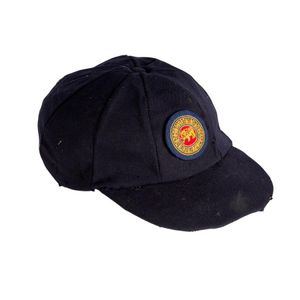Yellow Ming-style Dragon Dishes
A pair of yellow ground dishes, late 19th to 20th century, in the Ming style with incised emerald dragons chasing a flaming pearl to the exterior and centre upon a saffron yellow ground, bearing apocryphal Jiaqing, characters underside, diameter 15.5 cm
You must be a subscriber, and be logged in to view price and dealer details.
Subscribe Now to view actual auction price for this item
When you subscribe, you have the option of setting the currency in which to display prices to $Au, $US, $NZ or Stg.
This item has been sold, and the description, image and price are for reference purposes only.
- Emeralds - Emeralds have been used in jewellery making for thousands of years, and are prized for their deep green colour, which is caused by the presence of chromium and vanadium in the mineral beryl. Because of their rare colour, emeralds are often more valuable than diamonds of a similar size and quality. In jewellery making, emeralds are typically cut into round or oval shapes to maximize their color and clarity. They are often set in gold or platinum and used as the centrepiece of a piece of jewellery, such as a ring or necklace. They can also be used in combination with other gems, such as diamonds, to create intricate and beautiful designs.
- Ming Dynasty - The Ming Dynasty was a ruling dynasty of China from 1368 to 1644. It succeeded the Yuan Dynasty and preceded the Qing Dynasty. The Ming Dynasty was established by Zhu Yuanzhang, a former Buddhist monk who became a rebel leader and eventually overthrew the Mongol Yuan Dynasty. During the Ming Dynasty, China experienced a period of relative stability and prosperity. The government was centralized and bureaucratic, with the emperor at the top of the hierarchy. The Ming Dynasty is known for its cultural achievements, including the development of porcelain, the invention of movable type printing, and the construction of the Great Wall of China.
- Incised - A record of a name, date or inscription, or a decoration scratched into a surface, usually of a glass or ceramic item with a blunt instrument to make a coarse indentation. Compare with engraving where the surface is cut with a sharp instrument such as a metal needle or rotating tool to achieve a fine indentation.
This item has been included into following indexes:
Visually similar items

Sri Lanka test cap, blue wool, with embroidered Sri Lanka badge on front. Fair condition (few holes). [Identified by Jack Ryder as 'No.2 Batsman', so possibly one of the Wettimuny Brothers].
Sold by
in
for
You can display prices in $Au, $US, $NZ or Stg.

Pair of five branch sterling silver candelabra
Sold by
in
for
You can display prices in $Au, $US, $NZ or Stg.

Chinese sterling silver comport makers mark to base, 514gms approx, height 14 cm approx
Sold by
in
for
You can display prices in $Au, $US, $NZ or Stg.

Nepalese kukri Gurkha knife, 41.5 cm long
Sold by
in
for
You can display prices in $Au, $US, $NZ or Stg.
